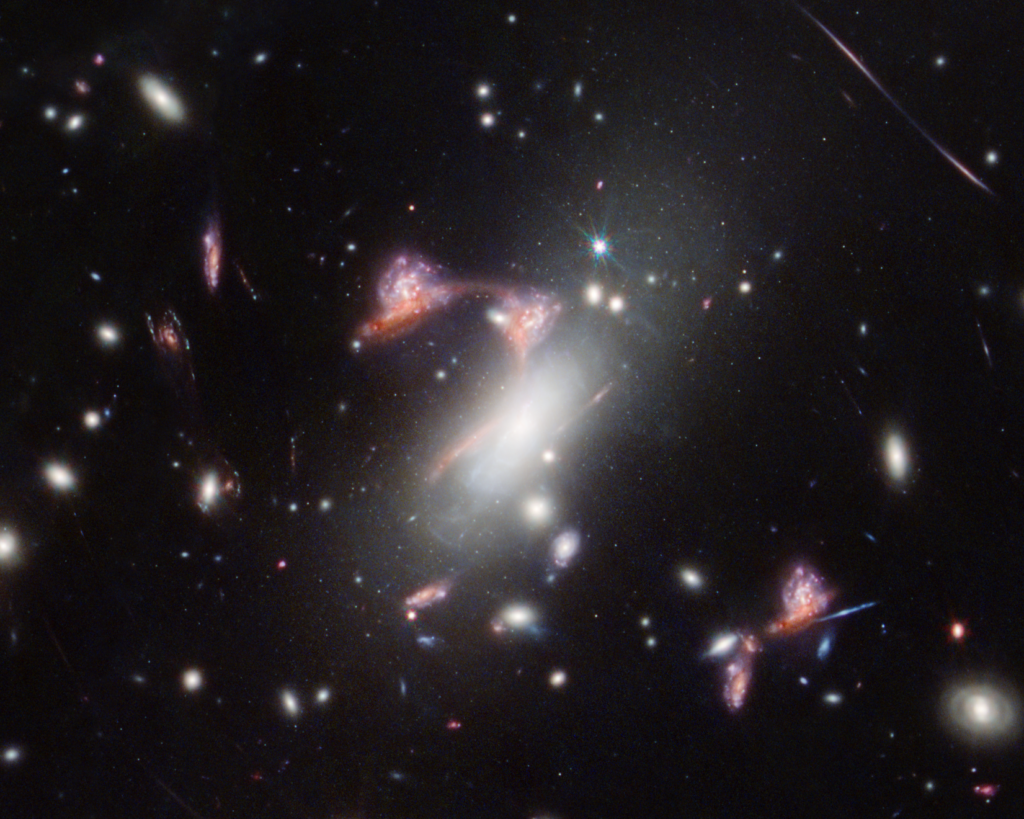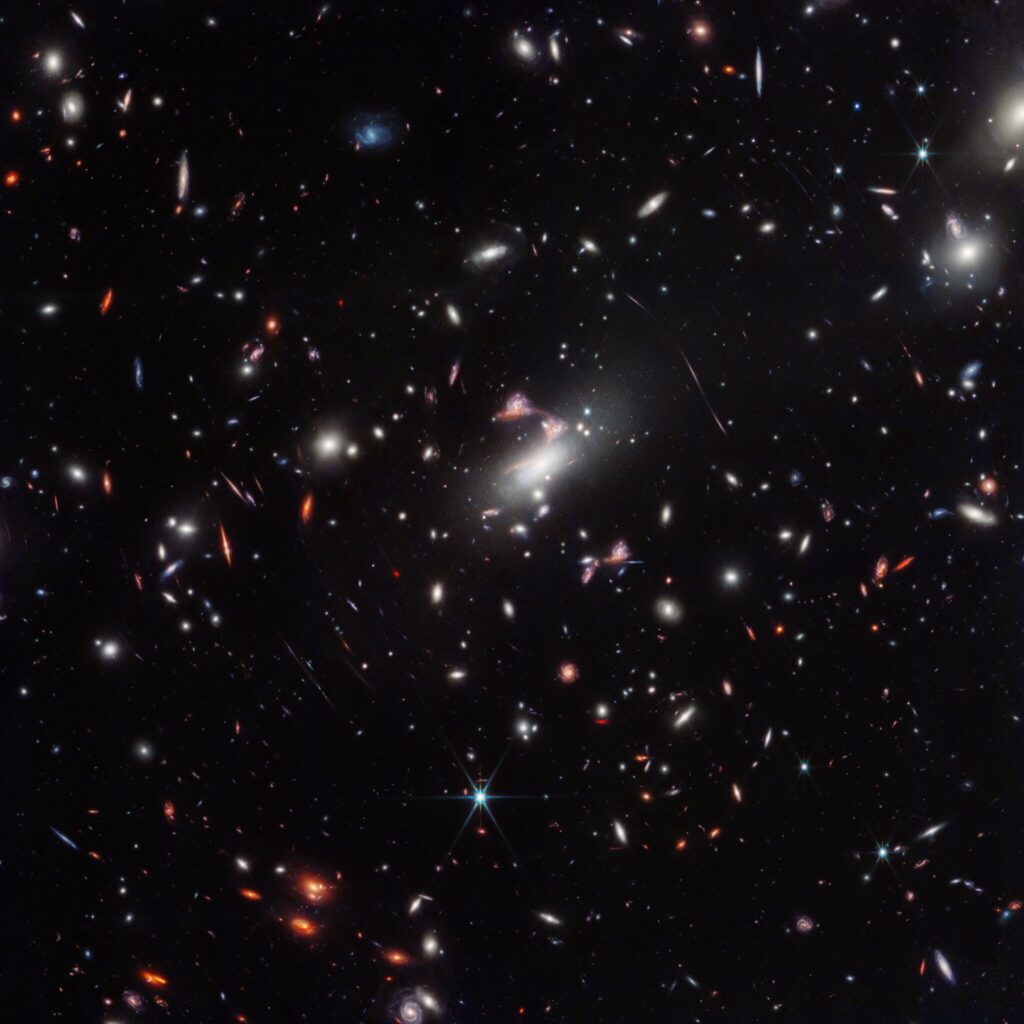7 billion years ago, the rate of star formation in the Universe began to slow down. What was our Milky Way like at that time? Thanks to the James Webb Space Telescope (JWST), astronomers have found a clue in the form of a giant question mark. This is the result of a rare type of gravitational lensing.

The cosmic question mark was discovered while studying the galaxy cluster MACS-J0417.5-1154. It is so massive that it serves as a magnifying glass. Because of this, astronomers can see details of the much more distant galaxies behind the cluster. However, the same gravitational effects that magnify galaxies also cause distortions. As a result, images of galaxies become arcs and can even be duplicated. These optical illusions are called gravitational lensing.
MACS-J0417.5-1154 was previously observed by the Hubble telescope. But the dusty red galaxy, which forms the shape of a question mark, could only be seen by JWST. This is because light with the wavelength that Hubble registers is blocked by dust. But longer infrared wavelengths can pass through it and be detected by JWST instruments.

Images of the red galaxy discovered by JWST, as well as the spiral galaxy with which it interacts, have been magnified and distorted in an unusual way. This was due to a special, rarely met type of alignment between them, the cluster and the Earth. Astronomers call it a hyperbolic umbilic gravitational lens. It spawned five “doubles” of a pair of galaxies, four of which formed the top of the question mark. The “dot” below it is an unrelated galaxy that is simply well placed in relation to us.
Observations have shown that both question mark galaxies are comparable in mass to the Milky Way and are actively forming stars in several compact regions. This is probably because they are interacting with each other and have already started the collision process. According to the astronomer, we see them at times when star formation in the Milky Way has peaked and started to slow down. Thus, the cosmic question mark seems as if it gives us a glimpse of what the teenage years of our own galaxy might have been like.
Earlier we told you about how James Webb discovered six rogue planets.
According to NASA


